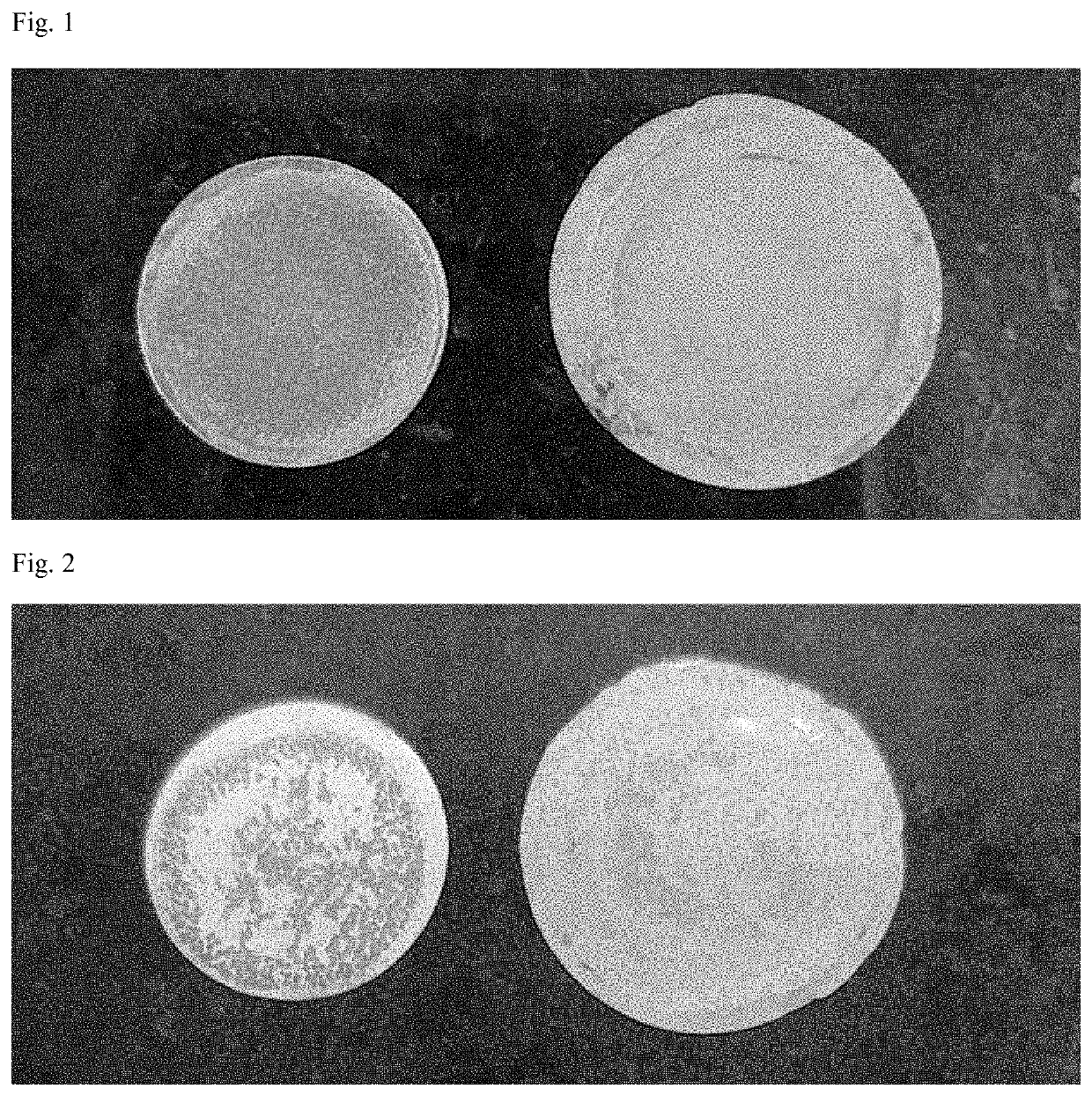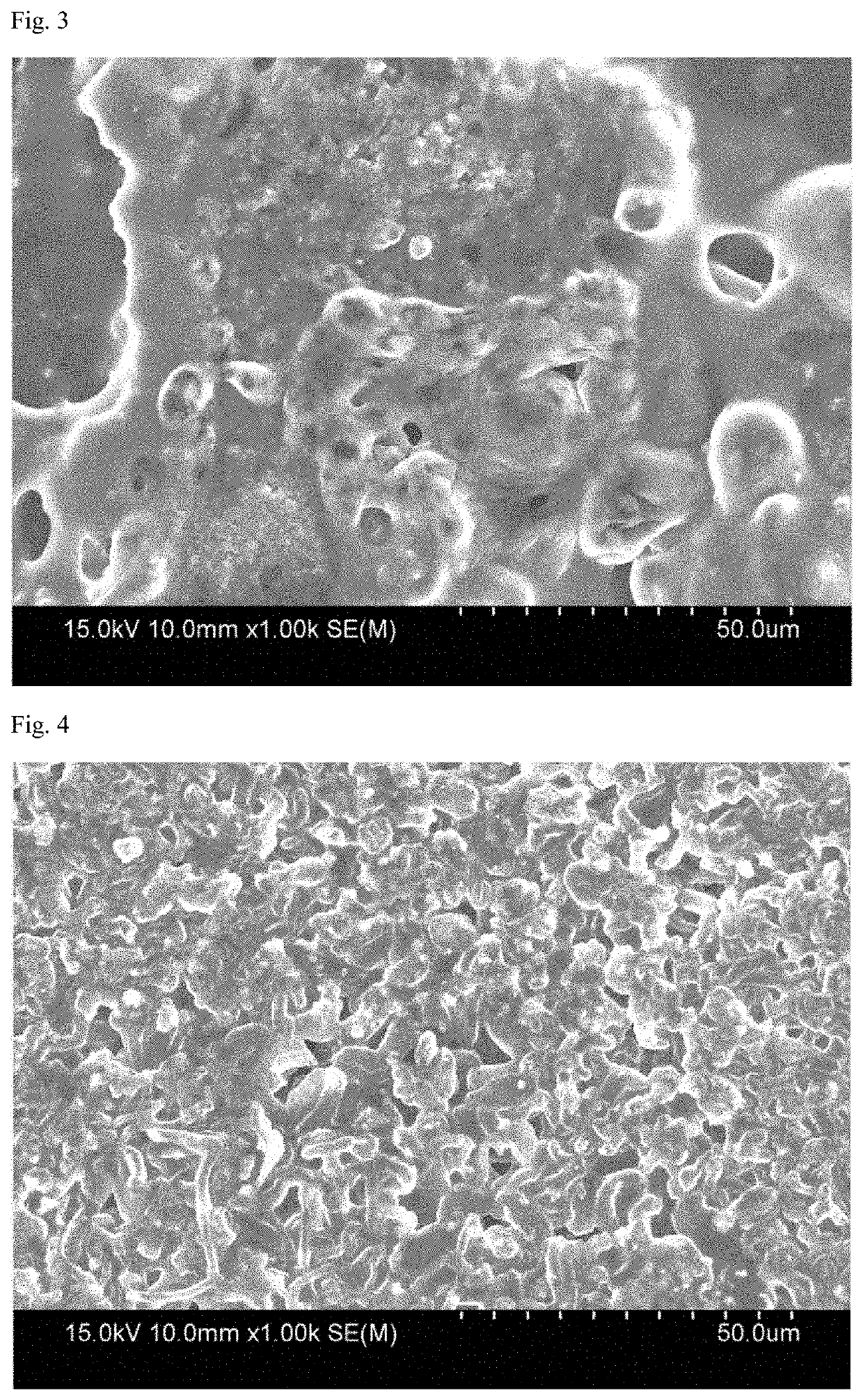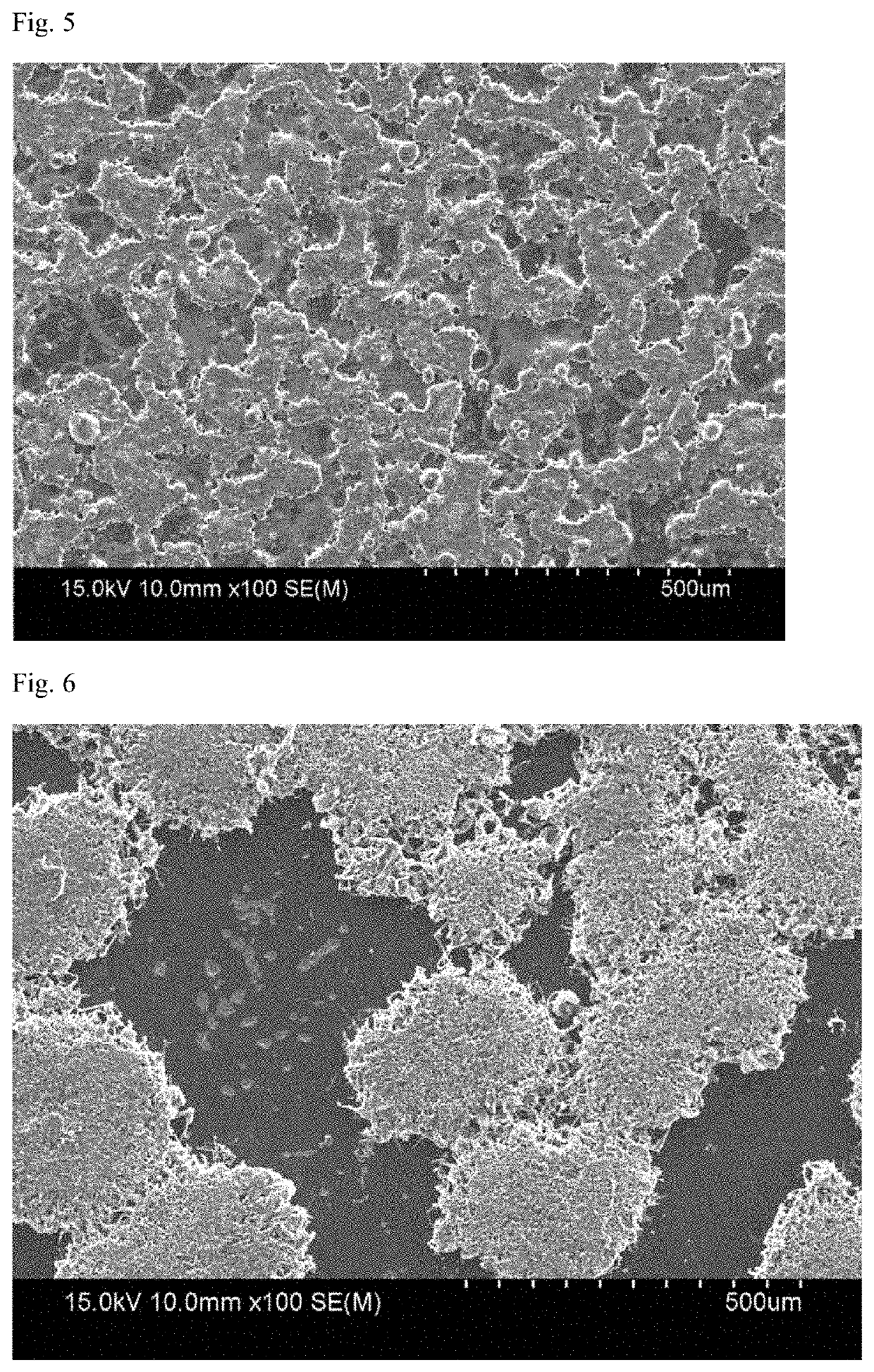Method for manufacturing secondary battery using lithium metal as negative electrode
a secondary battery and negative electrode technology, which is applied in the direction of final product manufacturing, sustainable manufacturing/processing, cell components, etc., can solve the problems of poor life cycle and safety of lithium metal electrodes, poor thermal stability in non-aqueous electrolyte, poor lithium metal electrode characteristics, etc., to reduce cell performance variation, improve battery cycle performance, and minimize the effect of ion conductivity
- Summary
- Abstract
- Description
- Claims
- Application Information
AI Technical Summary
Benefits of technology
Problems solved by technology
Method used
Image
Examples
example 1
(1) Preparation of Positive Electrode
[0060]96 wt % of LiNiCoMnO2, 2 wt % of Denka black (conductive material) and 2 wt % of PVDF (polyvinylidene fluoride) were added to NMP(N-Methyl-2-Pyrrolidone) as positive electrode active materials to thereby prepare a positive electrode mixture slurry. The positive electrode mixture slurry was coated on one surface of the aluminum current collector to a thickness of 65 μm, dried and rolled, and then punched to a predetermined size to produce a positive electrode.
(2) Preparation of Negative Electrode
[0061]Lithium metal negative electrode was prepared by attaching lithium metal (20 μm, rolled lithium) foil, as it was when received, on one surface of the cooper collector.
(3) Preparation of Lithium Secondary Battery
[0062]A coin cell having a polypropylene porous film interposed between the positive electrode and the negative electrode was prepared. An electrolytic solution in which 1M LiPF6 was dissolved was injected into a solvent in which ethylen...
examples 2 to 12
[0063]A lithium secondary battery was produced in the same manner as in Example 1, except that some discharging conditions were changed as shown in Table 1 during the activation process.
PUM
| Property | Measurement | Unit |
|---|---|---|
| discharge current density | aaaaa | aaaaa |
| discharge current density | aaaaa | aaaaa |
| discharge current density | aaaaa | aaaaa |
Abstract
Description
Claims
Application Information
 Login to View More
Login to View More - R&D
- Intellectual Property
- Life Sciences
- Materials
- Tech Scout
- Unparalleled Data Quality
- Higher Quality Content
- 60% Fewer Hallucinations
Browse by: Latest US Patents, China's latest patents, Technical Efficacy Thesaurus, Application Domain, Technology Topic, Popular Technical Reports.
© 2025 PatSnap. All rights reserved.Legal|Privacy policy|Modern Slavery Act Transparency Statement|Sitemap|About US| Contact US: help@patsnap.com



